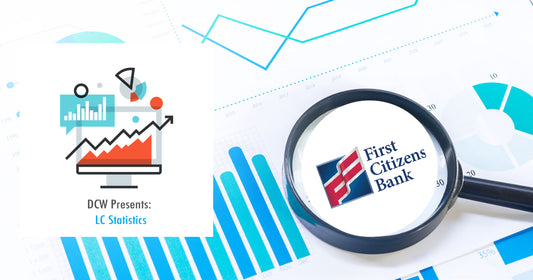Categories
- Anti Money Laundering
- authenticated
- automatic extension
- bill of lading
- compliance
- Counter Terrorist Financing
- extension
- financial crime
- Financial Guarantee
- Guarantee
- Independent Guarantee
- Iran
- ISP98
- LC
- LC Law
- LC Statistics
- Red Flags
- Sanctions
- Standby LC
- SWIFT
- Trade Based Financial Crime Compliance
- tranport documents
- UCP500
- UCP600
- wrongful dishonor
This article is taken from the June 2021 Edition of Documentary Credit World
Author: Tat Yeen Yap
Financial institutions have a critical role to play in combating various financial crimes such as money laundering, terrorist financing, bribery and corruption, proliferation of weapons of mass destruction and breach of economic, financial and trade sanctions. They face risks of legal liability, regulatory sanctions, financial loss, and reputational damage for failure to comply with applicable laws and regulations with regard to the detection and prevention of financial crime.
Financial crime compliance might be regarded by some as an occupational hazard for providers of financial services. It offers little, if any, reward and exposes financial institutions to severe penalties for breaches. However, the motivation to combat financial crime ought to transcend risks and rewards for financial institutions. The integrity of the financial system is essential for the support of legitimate financial flows and is the responsibility of all stakeholders.
This article focuses on the topic of “trade-based money laundering” (TBML) which the Financial Action Task Force (FATF) has defined as “the process of disguising the proceeds of crime and moving value through the use of trade transactions in an attempt to legitimise their illegal origins or finance their activities.”1 According to the FATF, that which distinguishes TBML from other trade-related crimes (e.g. smuggling) is that TBML’s aim is the movement of money rather than goods. The primary objective of any TBML scheme is the deliberate movement of illicit funds proceeds by exploiting trade transactions.
Financial institutions are a conduit for the flow of illicit funds under the pretext of financing or paying for a trade transaction. TBML can be carried out through misrepresentation of the price, quantity, or quality of imports or exports, and fictitious trade activities. Tactics include over- or under-invoicing, multiple invoicing, short- or over-shipping, obfuscation (shipping something other than what is invoiced), or shipping nothing. For these reasons, ascertaining that there is a genuine underlying trade transaction is essential to trade finance – it avoids the trade finance transaction, the financial institution and the financial system from being exploited by money launderers.
For those that consider TBML risk to be benign, it might be worth stating the scary fact that its perpetrators comprise organised criminal groups, professional money launderers and terrorist financing networks (collectively, “syndicates”) that seek to conceal the proceeds of crimes such as drug trafficking, through the financial system. Trade finance bankers may be lured into closing an eye on TBML, especially when the revenues earned on transactions are lucrative considering that the syndicates may not be price-sensitive when it comes to paying for the use of the financial institutions’ services to launder funds.
The United Nations Office on Drugs and Crime estimates that the amount of money laundered globally annually is between USD 800 billion to USD 2 trillion, or 2-5% of global GDP. 2Think tank Global Financial Integrity (GFI) has examined official government data reported to the United Nations Comtrade to gauge the magnitude of “trade misinvoicing”, which it considers as one of the largest components of measurable illicit financial flows. The example provided is that if Ecuador reported exporting USD 20 million in bananas to the United States in 2016, but the US reported having imported only USD 15 million in bananas from Ecuador that year, this would reflect a mismatch, or value gap, of USD 5 million in the recorded trade of this product between the two partners for that year. Trade misinvoicing occurs when importers and exporters deliberately falsify stated prices on the invoices for goods they are importing or exporting as a way to illicitly transfer value across international borders, evade tax and/or customs duties, launder the proceeds of criminal activity, circumvent currency controls, and hide profits offshore. GFI estimated a value gap of USD 8.7 trillion between 135 developing and 36 advanced economies during 2008-2017.3
Evaluating the reasonableness of the price of goods that the financial institution finances or effects payment for is a way for financial institutions to detect TBML. The question on how to effectively check prices is a valid one for banks to ask, but a difficult one to answer.
Trade Finance and TBML Controls
According to the World Trade Organization, 80-90% of global trade is supported by trade finance. International trade is an important contributor to economic growth, poverty reduction, and private financial flows across countries. Access to affordable trade finance is a condition for successful international trade. 4 Trade finance is funding of the real economy and financial institutions may view themselves as performing a public good when they avail trade finance to legitimate borrowers or financing applicants. Combating TBML is essential for safeguarding the financial system and its providers from being tainted by its use for and support of criminal activity.
Most banks’ TBML controls focus on documentary trade, a business in which banks handle documents containing information on the underlying trade transaction. Having reams of information on transactions could be seen by some as extremely burdensome to banks, because they are expected to comb through the vast amount of data therein to detect misinvoicing and other red flags. When banks finance open account trade, they typically require less documents/data than seen in documentary trade – invoices supported by a copy of the transport documents might be all that is required, and in some instances, only invoice data is required.
Open account trade represents a very sizeable market for trade finance. According to many estimates, at least 80% of global trade is on open account and less than 20% is documentary trade. This is a complete reversal from four decades ago when the proportion of trade conducted on open account was 20% compared to 80% on a documentary basis. 5 Whilst many have stated that use of letters of credit in international trade has been diminishing (and the volumes of world trade not intermediated by letters of credit and documentary collections seem to support this view), our understanding of the reasons for the increase in open account trade must take into account globalisation and the growth of multinational corporations over the past few decades which has resulted in widespread offshoring of manufacturing and production from advanced economies to lower cost economies. Intra-group movements of goods manufactured offshore are counted as exports and imports between countries - commercially, these related-party shipments do not require LCs and have contributed significantly to the growth of open-account trade.
Non-bank entities including fintech companies and trade finance funds are increasingly providing trade finance. Such financiers often are not subject to the same levels of regulation that banks are, and might be less accustomed to the rigours of combating TBML. Nevertheless, they ought to exert the same vigilance so as to guard against being unwittingly used by syndicates in TBML schemes, especially in financing open account trade.
Industry Approach Needed to Combat TBML
The Bankers Association for Finance and Trade (BAFT) made an interesting calculation that of all types of payments made globally, just 0.52% of the payments represented trade settlements. Since at least 80% of trade is open account, an infinitesimal 0.1% of all global payments represented documentary trade settlements. 6 Much of banks’ efforts at AML monitoring focus on documentary trade (simply because banks have documents to check) and is not seen as a very efficient use of resources considering that such measures are implemented to identify and intercept illicit funds in flows that make up a mere 0.1% of total global funds flows. BAFT’s findings illustrate that reigning in TBML cannot be disproportionally tasked to banks alone – law enforcement, government agencies and regulators ought to adopt an ecosystem approach toward addressing the problem by bringing together stakeholders like financial institutions, customs agencies and shipping companies that serve specific roles and have access to different information. Individual institutions and industries have limitations, but an ecosystem view is more illuminating and effective at detecting and proactively preventing financial crime.
The Digital Trade Finance Lab of the Asia-Pacific Financial Forum (APFF) picked up on the conclusions and recommendations of BAFT in a recent project and analysed the role technology can play to more effectively stunt TBML. According to a forthcoming whitepaper that will soon be published, innovative technologies such as blockchain, artificial intelligence, and privacy-enhancing techniques can be utilised for information-sharing and overcoming the barriers thereto. Such technologies have the potential to alleviate the compliance issues surrounding private-private information sharing, which is seen as essential for an industry-wide and cross-industry response to TBML. A number of recommendations and prescribed measures have been identified to be presented to the finance ministers of the APEC member economies. They include the standardisation, security and visibility of data to financial institutions and businesses. Such data includes prices, volume, origin and destination of goods, HS codes, quality/grade of goods and models/brands, and datasharing should involve financial institutions, government (e.g., customs), logistics providers, traders, inspectors and technology providers. 7
Recognising that AML is carried out by actors that include syndicates, effective Know-Your- Customer (KYC) serves as a first (but not the only) line of defence for a financial institution. KYC is an onerous process for financial institutions and costly as well. A relatively new initiative that is increasingly gaining traction, the Legal Entity Identifier (LEI) provides one global identity for businesses worldwide. 8 The LEI enables unique and unambiguous identification of legal entities participating in financial transactions, providing information on an entity’s ownership structure, thereby answering the questions of ‘who is who’ and ‘who owns whom’. By enhancing transparency of businesses, the LEI is considered as possessing transformative power to create more certainty in customer onboarding and credit approval processes. The Asian Development Bank identifies the benefits of the LEI to include: ability for trade financiers to validate the identity of potential clients, overseas counterparties and service providers; fraud reduction; enhancing efficiency of AML and CFT practices thereby reducing instances of “defensive compliance”; reduce instances of “false positives” in compliance activity; and improve ability to identify patterns in AML and CFT issues in trade finance. 9 Use of LEI could be made best practice, if not mandatory, by trade financiers worldwide as a means of creating more transparency in the identity of parties who appear on documents and in transaction data.
Effective management of TBML risks by trade finance providers’ adoption of industry initiatives ought to result in the benefit of reducing friction for their customers, and enable them to avail greater amounts of trade finance to more customers.
Suspected TBML Risks in Real Life
The author has stories from his own experience to share. He had a trader client based in Singapore who was purportedly the biggest supplier of a particular commodity to India, with a market share of more than 50% and hundreds of buyers in India. The Indian buyers financed their purchases through usance letters of credit and the trader bought from suppliers of the commodity in South East Asia using sight letters of credit. The trader had credit facilities with the author’s bank, who issued letters of credit to the trader’s suppliers. It was understood that settlement of these LCs would be made from the proceeds of discounting the trader’s export LCs. The export LCs were discounted by other banks because the trader had with these banks credit facilities for pre-acceptance discounting, with recourse to the trader (the recourse would be lifted once acceptance of the issuing banks was received). The reason the author’s bank did not provide LC discounting to the trader was because his bank could not accommodate the trader’s request for discounting immediately upon presentation without document examination. The trader insisted on such an arrangement on the pretext that, based on experience, they could never make discrepancy-free presentations and that any buyer in India that wanted to be supplied the commodity would have to waive discrepancies (given the trader’s dominant market position). Besides, there was always pressure to urgently forward the documents to the issuing bank due to imminent arrival of the chartered vessel.
In time, the author’s bank noticed a change of the source of payments to settle its issued LCs – payments were being received from banks in Hong Kong. When queried, the trader informed that the Indian buyers were using Hong Kong agents to effect payments. The author’s bank eventually decided to terminate the relationship with the trader because it found the client’s transactions too opaque and difficult to explain. This trader has recently been implicated in allegations of fraud in financing transactions linked to its dealings with a large global commodities trader.
In another story, the author was introduced to a business visitor who requested the author’s bank in Singapore to discount some large value LCs from North Asia. According to the visitor, the issuing banks would have no risk since the LCs would be fully cash-backed and the beneficiary was not price-sensitive on the nominated bank’s charges. Although the author’s bank had sufficient approved limits for the intended issuing banks, it decided to decline the request because the visitor was evasive when asked and pressed on disclosing what underlying trade transactions the LCs would be supporting.
These stories are shared to illustrate the practical difficulties faced by banks when attempting to assess their clients’ transactions without full visibility thereon. Banks often have to evaluate risks based on the “believability” of the clients’ answers to questions about their trade transactions. A trade finance provider must be cognisant of the various risks it assumes on its clients (credit, compliance, fraud and other risks) and to review such risks on a periodic and ongoing basis.
Towards More Effective TBML Controls
Current recommended mitigation methods for TBML risk include the following: •
- Education and training of the financial institution’s staff on compliance requirements and to instill a compliance culture, based on guidelines or guidance from its regulators. •
- Effective KYC practice to verify the customer and its owners prior to onboarding (and periodic reviews subsequent to onboarding) and Customer Due Diligence to assess their level of AML/ CFT risk.
- Transaction screening, reviewing and monitoring, to verify that the underlying trade transactions are genuine and do not violate applicable regulation.
Money laundering is essentially a payments problem, because it is perpetrated by the movement of money. The focus of TBML must therefore extend beyond a focus, and the sharpening thereof, on documentary trade finance, because documentary trade payments form only a fractional percentage of trade-related payments overall. The risks of TBML in open account trade is substantially higher. As a result, the means toward an effective solution should include industry-level measures such as greater private-public collaboration, private-private data sharing, use of technology, and the requirement for LEI by financial institutions and businesses. Staff working in financial institutions are at the forefront of managing TBML risks for their respective businesses and must recognise that combatting TBML is the responsibility of staff in various roles such as front office, operations, credit, risk, compliance, and internal audit. Money laundering is a problem that plagues the entire financial system and is not confined to trade finance. With the amount of data actually available (currently in information silos) in trade, the possibility of harnessing that data in a privacy-preserving way carries the promise of making TBML controls more effective and thereby rendering trade finance a lower money laundering risk.
Additional TBML Resources:
- For the ultimate guide to TBML, and all forms of trade based financial crime, and tools for organizations to remain compliant with applicable laws and regimes, see IIBLP's own Trade Based Financial Crime Compliance
- For those looking for a certificate program aimed directly at this subject matter, look no further than the Certificate in Trade Finance Compliance issued jointly by the London Institute of Banking & Finance, Coastline Solutions, and IIBLP.
- For more free resources, visit FATF for the latest from the global AML watchdog
Footnotes
-
FATF – Egmont Group, 2020. Trade-based Money Laundering: Trends and Developments [Online]. Available from: https://www.fatf-gafi.org/publications/methodsandtrends/documents/trade-based-money-laundering-trends-anddevelopments.html [Accessed 23 June 2021].
- United Nations Office on Drugs and Crime [Online]. Available from: https://www.unodc.org/unodc/en/moneylaundering/overview.html [Accessed 23 June 2021].
- Global Financial Integrity, 2020. Trade-Related Illicit Financial Flows in 135 Developing Countries: 2008-2017 [Online]. Available from:https://secureservercdn.net/45.40.149.159/34n.8bd.myftpupload.com/wp-content/uploads/2020/03/GFI-Trade-IFF-Report-2020-Final.pdf?time=1624314817 [Accessed 23 June 2021].
- World Trade Organization, The Challenges of Trade Financing [Online]. Available from: https://www.wto.org/english/thewto_e/coher_e/tr_finance_e.htm [Accessed 23 June 2021].
- Global Supply Chain Finance Forum. Development Foreign Trade (Exports) From 1978 until 2013 [Online]. Available from: http://supplychainfinanceforum.org/ [Accessed 23 June 2021].
- BAFT, 2017. Combating Trade Based Money Laundering: Rethinking the Approach [Online]. Available from: https://baft.org/docs/default-source/marketing documents/baft17_tmbl_paper.pdf [Accessed 23 June 2021].
- The APFF Digital Trade Finance Lab aims to accelerate the digitisation of trade and supply chain finance in the Asia-Pacific region and invites the voluntary participation of experts and representatives of private and public sector institutions and organisations who are able to contribute to the fulfilment of its mission and are actively engaged in promoting the adoption of legal, regulatory and institutional reforms and standardisation to facilitate trade and supply chain financing. Information on the Asia-Pacific Financial Forum available from: https://www2.abaconline.org/pagecontent/22613276/AsiaPacific%20Financial%20Forum
- The LEI initiative is driven by the Group of 20 and the Financial Stability Board (FSB). Created by the FSB in 2014, GLEIF is a supra-national, not-for-profit organization tasked to manage the only open, non-proprietary legal entity identification system designed as a public good. Information on Global Legal Entity Identifier Foundation available from: https://www.gleif.org/en
- Beck, S., Doyle, R., Sutken, C., Malaket, A., Estrada, C., 2019. Trade and the Legal Entity Identity. ADB Briefs [Online], No. 115. Available from: https://dx.doi.org/10.22617/BRF190490-2 [Accessed 23 June 2021].





